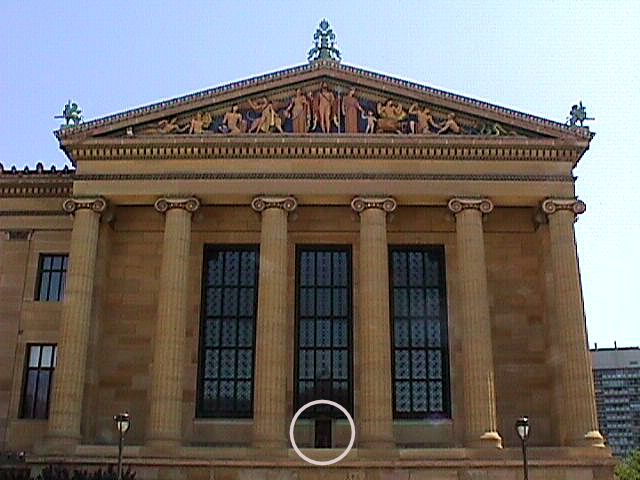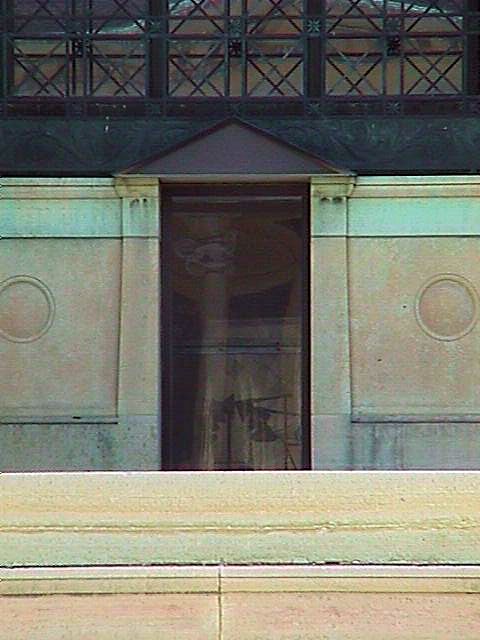Directly below the North Wing Pediment of the Philadelphia Museum of Art is a small glassed opening that connects to a gallery within the museum. This aperture was not part of the building as originally executed. Rather its creation occurred in 1954, and is the manifestation of a Marcel Duchamp intention, for immediately behind the opening is The Bride Stripped Bare by Her Bachelors, Even, which stands as the centerpiece of the Philadelphia Museum's Duchamp gallery.
"As soon as he was well enough, Duchamp resumed his frequent trips to Philadelphia, where the Arensberg collection was being installed under his supervision in ten spacious, high-ceilinged galleries that had been specially designed for it. One of the largest rooms was devoted to his own work. The Arenbergs had kept right on adding to their Duchamp holdings. The bought The Chess Game from Walter Pach in 1950, and in 1951 Duchamp's old school chum, Raymond Dumouchel, who had retired from medical practice and was living in the south of France, agreed to sell them the portrait that Duchamp had done of him in 1910, with the luminous aura surrounding his hand. Thanks to Katherine Dreier their collection had regained its centerpiece,The Large Glass, the great "delay" that held in suspension the nonretinal ideas of its making. Duchamp was on hand when the Glass was installed in the middle of the room, facing a doorlike window that had been cut into the wall on his instructions. The window [looks onto] a courtyard. There [is] a large fountain in the center of the courtyard, and on the other side of the fountain there were two monumental pieces of sculpture. One of them, a nude female in bronze called Yara, was by Maria Martins. (Its title referred to a river in Cuba.) Whether by accident or design (and everything we know about Duchamp suggests that it was not by accident), the sculpture was sited in such a way that you could look through the Glider element of The Large Glass. through the window, through the outdoor fountain (la chute d'eau). and see it in the background."
Calvin Tomkins, Duchamp: A Biography (New York: Henry Holt and Company, 1996), p. 389.
Yara has since been removed from its former position within the museum courtyard, thus the visual connection representing the love affair, as intimated by Tomkins, between Duchamp and Martins can no longer be experienced by the gallery visitor. Nonetheless, it is worth further noting that not only is Tomkins's visual connection identical to the experience of viewing Etant donnés: 1. la chute d'eau/ 2. le gaz d'éclairage (a Duchamp work also now in Philadelphia, but a secret project of Duchamp's until his death in 1968), but the Tomkins Duchamp-Martins connection at Philadelphia also reënacts the "sacred and profane love" theme of Jennewein's Western Civilization. That all these love themes should have occurred along the same exact axis is perhaps the greatest chance happening in 20th century art.
In any case, a clear, sunny day in Philadelphia offers one the opportunity to stand in museum courtyard and catch a faint glimpse of The Large Glass, especially the glider element. Again, one finds oneself peering through yet another Duchamp aperture.
| |

|

